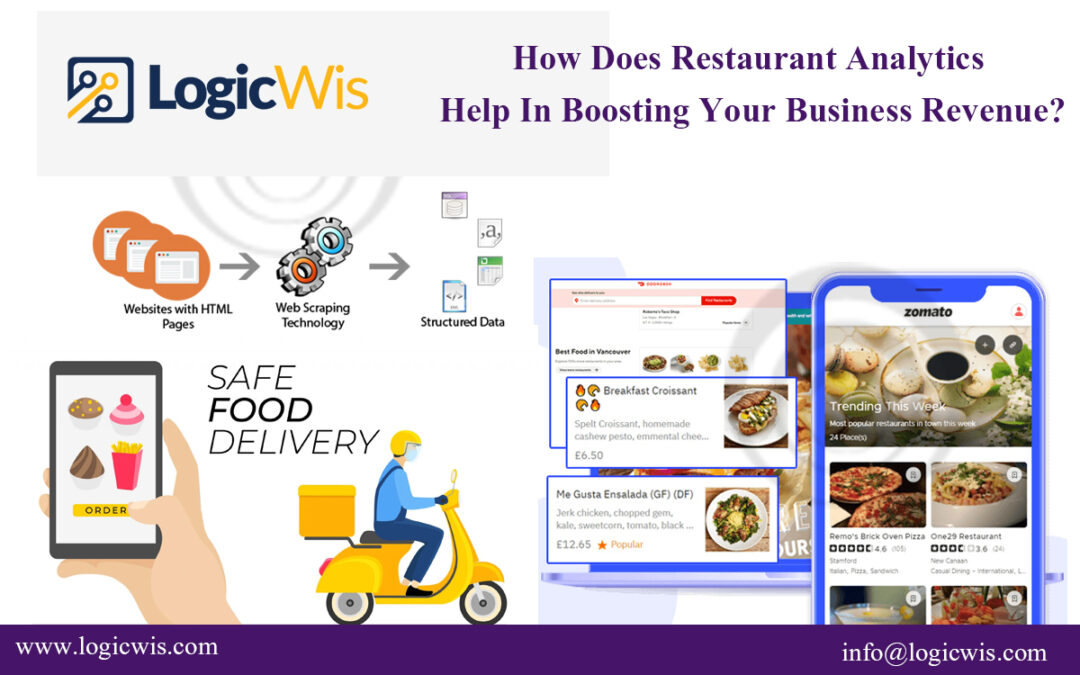Digitization has changed the F&B business thanks to data-driven technologies, and you may use those insights to increase revenue. Cloud-based POS systems deliver detailed restaurant data when someone swipes a card, orders anything online, or shares their contact information. With so much competition among restaurants, the capacity to evaluate specific pieces of data and produce effective outcomes is essential.
As a restaurant owner or manager, using restaurant data is a blessing in disguise. This information can help you improve your menu, attract more guests on special occasions, create marketing campaigns, and more.
Defining the Concept of Restaurant Analytics
It’s the process of analysing raw data in order to derive very basic insights that can be used to improve restaurant marketing and business decisions. The goal is to appropriately collect, compute, and display data to participants so that future methods for improving restaurant revenue can be devised.
Restaurant data analytics collects all of the necessary information in order to better understand how the restaurant is operating and how it can be improved. It’s also vital to keep track of competitor price data in order to stay ahead of the pack and take the lead.
How Do Restaurants Collect (Scrape) Customer Information?
The days of using a pen and paper to keep track of your customers are long gone. Together with restaurant data analytics, modern reservation systems acquire and organise customer data such as name, phone number, meal preferences, eating habit, and so on.
Another type of data collection is POS systems. They can keep track of popular cuisines, typical customer meal bills, preferred payment methods, and so on. You can make more informed decisions if you combine this data with that of your competitors’ meal delivery data.
What Are the Benefits of Restaurant Data Analytics?
Having restaurant data analytics won’t make your firm more successful right away. These are data points that can be utilised to forecast how to increase sales and profitability. For example, you could use the data to figure out when your restaurant is busiest. Having extra personnel on hand during these hours will help you cut down on client wait times. Data like the most popular items, who is ordering what, and the average customer spend can help you examine your restaurant business more effectively.
Research the most popular appetisers and beverages to advertise to boost your restaurant’s marketing. You should also employ bespoke web scraping to collect data from your competitors, which you can then use for the following purposes:
- Customers’ Profiles
- Campaigns with a Purpose in Marketing
- Increasing Productivity
- Raising the average order value
- Sales have increased.
- Recognizing and rewarding loyal customers
You must provide outstanding service to gain repeat customers. Quickly processed orders and easy-to-complete payments will help you to serve more customers and enhance table turnover.
How is Labor Cost Minimization Achieved through Restaurant Data Analytics?
At a restaurant, the main two expenses are labour and food waste. To make a profit in your restaurant, you must make well-informed decisions about labour costs against revenue. Restaurant analytics software can help you find simple and pleasant shifts. As a result, you’ll be able to staff specific shifts with fewer people, decreasing labour costs.
You’ll also learn about the busiest times of day so you can plan ahead for specific shifts or days. More individuals eat out during certain festive seasons and holidays. Make use of the past data to arrange your staffing so that you have additional part-time workers on hand to handle the influx at your restaurant.
When it comes to food loss, the POS system can keep track of the inventory in the kitchen. Your kitchen staff will be held more accountable for the manner they prepare and deliver meals to customers as a result of this. Cooks who aren’t careful can deplete your kitchen supplies, which can have a negative influence on your organisation. Knowing what you have in your kitchen will assist you in making better supper plans.
If you have extra bread in your kitchen, for example, grilled sandwiches will be a good addition to your menu.
How Can Data Insights Help You Make Better Menu Decisions?
Customer data analytics could help you figure out which items to keep on the menu, which meals to discount, and which dishes to re-price. Use data insights to gain a deeper understanding of your restaurant’s patrons. Let’s pretend a meal gets orders from a variety of people, but no one ever orders the same thing twice. Now it’s up to you to figure out why this is happening.
Restaurant owners should compare their own pricing to that of their rivals. This strategy might help you find the costly products on your menu if you have the right information.
Consumer experience may also be revealed by data insights, which you may use to modify their eating experience.On the first page of your menu, put the most popular items. On their birthdays or anniversaries, you may also make your clients feel special by providing them with a complementary cake. You may also customise offers for your visitors.
Final Thoughts: Predictive Insights for a Competitive Edge
Predictive analytics is a type of data analysis that analyses historical data to forecast future patterns and results. Predictive analytics can surely help you enhance your gross margin in the restaurant industry. It will not only improve order accuracy, but it will also predict which meals would be popular throughout the day’s peak hours.
Comparing your historical data to today’s revenue will help you plan your journey.
Contact Scraping Intelligence today for any restaurant data scraping services! Request for a quote!

